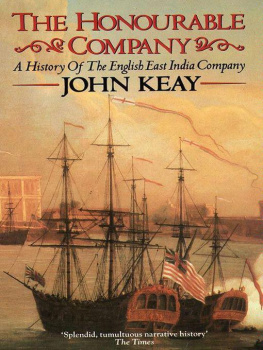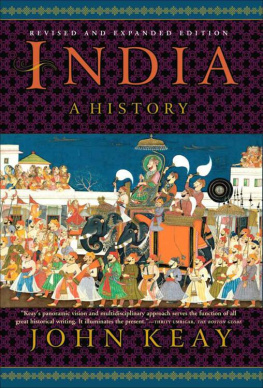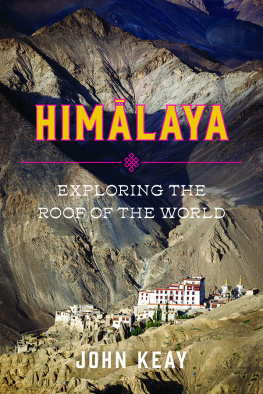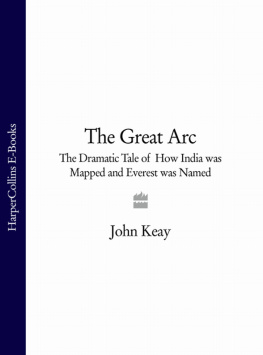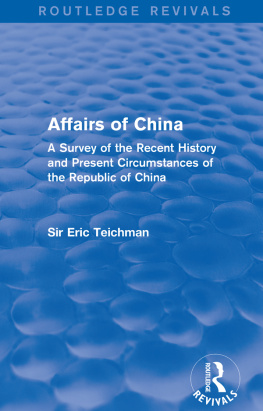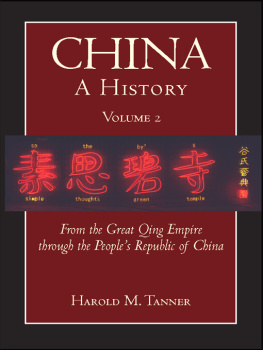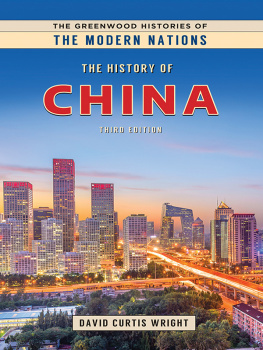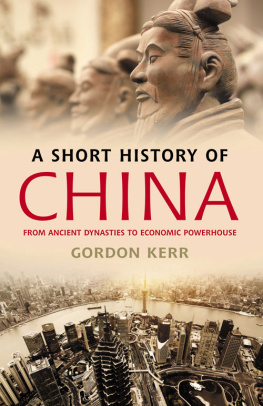JOHN KEAYS books include India Discovered, The Honourable Company, Last Post: The End of the Empire in Far East, the two-volume Explorers of the Western Himalayas, India: A History, The Great Arc, Sowing the Wind: The Seeds of Conflict in the Middle East and Mad about the Mekong: Exploration and Empire in South East Asia. He is married with four children, lives in Scotland, and is co-author with Julia Keay of the Collins Encyclopaedia of Scotland.
From the reviews of China: A History:
Much of [Chinas] past, by any standard, is awe-inspiring. Not just for the temples, palaces and terracotta armies that remain, but for the earliest books and scripts and poems that underpin the beginnings of true civilisation... Anybody fascinated by the puzzle of what comes next for our frail, perplexed planet will find unexpected answers in this crisp, often witty chronicle of amazements: for what comes next, as the Chinese know, is also what came up in the dynasty before last
Observer
Ambitious... [this] book has many virtues, not least its refusal to adopt a Eurocentric perspective. It also reminds us that to talk of one China, or one Chinese history, is absurd... Chinas past was contested and fragmented. Intoxicatingly interesting
Independent on Sunday
An epic history of China... As China begins to dominate the contemporary world order a comprehensive record of this vast nation, its extended ancestry and distinctive culture is particularly timely. Theres no way of understanding Chinas stirring future without a sense of its awe-inspiring past
Traveller magazine
By the same author
Into India
When Men and Mountains Meet
The Gilgit Game
Eccentric Travellers
Explorers Extraordinary
Highland Drove
The Royal Geographical Societys History of World Exploration
India Discovered
The Honourable Company
The Collins Encyclopaedia of Scotland (with Julia Keay)
Indonesia: From Sabang to Merauke
Last Post: The End of Empire in the Far East
The Great Arc
India: A History
Sowing the Wind: The Seeds of Conflict in the Middle East
Mad about the Mekong: Exploration and
Empire in South East Asia
The Spice Route: A History
The London Encyclopaedia (3rd Edn) (with Julia Keay)
CHINA
A HISTORY

JOHN KEAY

A MEMBER OF THE PERSEUS BOOKS GROUP
NEW YORK
Copyright 2009 by John Keay
Maps and diagrams HarperCollins
First published in the United States in 2009 by Basic Books,
A Member of the Perseus Books Group
Originally published in Britain in 2008 by HarperPress,
an imprint of HarperCollins
All rights reserved. No part of this book may be reproduced in any manner whatsoever without written permission except in the case of brief quotations embodied in critical articles and reviews. For information, address Basic Books, 387 Park Avenue South, New York, NY 10016-8810.
Books published by Basic Books are available at special discounts for bulk purchases in the United States by corporations, institutions, and other organizations. For more information, please contact the Special Markets Department at the Perseus Books Group, 2300 Chestnut Street, Suite 200, Philadelphia, PA 19103, or call (800) 810-4145, ext. 5000, or e-mail .
A CIP catalog record for this book is available from the Library of Congress.
LCCN: 2009930982
ISBN: 978-0-465-01580-1
British ISBN: 978-0-00-722177-6
10 9 8 7 6 5 4 3 2 1
For Julia
The Master said, Is it not a pleasure, having learned something, to try it out at due intervals? Is it not a joy to have like-minded friends come from afar? Is it not gentlemanly not to take offence when others fail to appreciate your abilities?
Confucius, The Analects, Book I, i
He who does not forget the past is master of the present.
Sima Qian, Shiji
CONTENTS
This book is heavily indebted to a legion of China specialists, some of whom are mentioned in the text and others in the source notes and bibliography. I know few of them personally but I hope their views have not been misrepresented. It also owes much to Ian Paten for his painstaking editing, to Caroline Hotblack who brought a rare understanding to the picture research, and to Louise McLeman for the design and HL Studios for labouring over the maps and tables. I am most grateful to all of them. A word of thanks, too, to the inventor of wheeled luggage, without which the squirreling home of trunkloads of books would have crippled me, and to the makers of that China-travellers essential, the plastic cafetire.
Richard Johnson of HarperCollins suggested the book. He also championed it, commissioned it, and oversaw every stage of its production. This is the fifth book on which we have worked together. His support and friendship have been so invaluable that mere acknowledgment seems insulting. The same goes for Julia, to whom I am married. For three years she has lived this book as much as I have. It was she who fathomed the working of China Railways, hauled me from the path of oncoming traffic, and almost never complained. She has read every word of the text and drew the roughs for the maps and tables, often at the expense of her own work. No one could have been readier with encouragement and support. Ideally her name should be beside mine on the title page. Instead it is as near as possible, on the dedicatory page.
John Keay
May2008
CHINAS ECONOMIC RESURGENCE IN THE POST-MAO era has not been without its casualties. Gone are the Chairmans portraits, the mass parades of flag-waving workers and the hoe-toting brigades on their collectivised farms. Apartment blocks, tightly mustered and regimentally aligned, perform the new choreography; flyovers vault the rice paddies, cable cars abseil the most sacred of mountains, hydrofoils ruffle the lakes beloved of poets. Familiar features in the historical landscape have either disappeared or been reconfigured as visitor attractions. Iconised for a market as much domestic as foreign, they make inviting targets for another demolitionist fraternity, that of international academe. When history itself is being so spectacularly rewritten, nothing is sacred. The Great Wall, the Grand Canal, the Long March, even the Giant Panda? Myths, declare the revisionist scholars, facile conflations, figments of foreign ignorance now appropriated to gratify Chinese chauvinism.
Contrary to the tourist brochures, the Great Wall has been shown to be not over 2,000 years old, not 6,000 miles [9,700 kilometres] long, not visible from outer space not visible on the ground in many places and never to have been a single continuous structure. Those sections near Beijing that may conveniently be inspected today have been substantially reconstructed for just such inspection; and the rubble and footings from which they rise are those of Ming fortifications no older than the palaces in the Forbidden City or Londons Hampton Court.
Likewise the Grand Canal. Reaching from the Yangzi delta to the Yellow River (Huang He), a distance of about 1,100 kilometres (700 miles), the canal is supposed to have served as a main artery between Chinas productive heartland and its brain of government. Laid out in the seventh century AD, it did indeed connect the rice-surplus south to the often cereal-deficient north, so fusing the two main geographical components of Chinas political economy and supplying a much-needed highway for bulk transport and imperial progresses. Yet it, too, was never a single continuous
Next page

